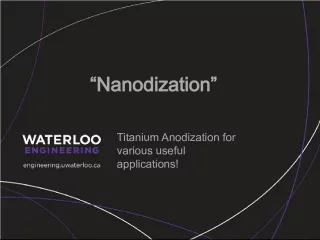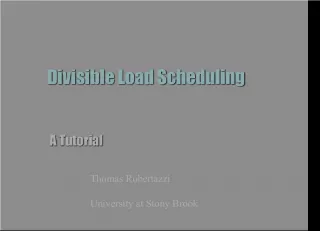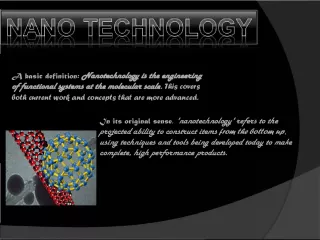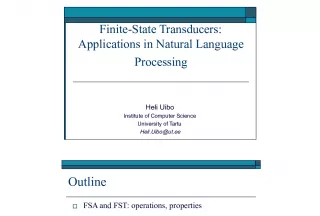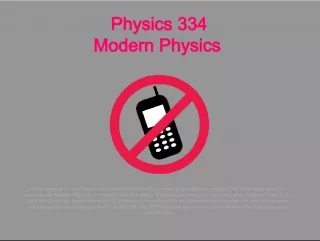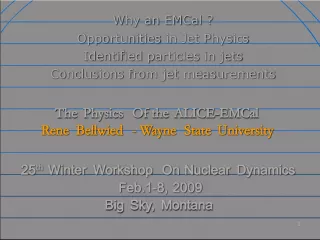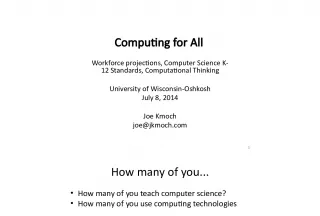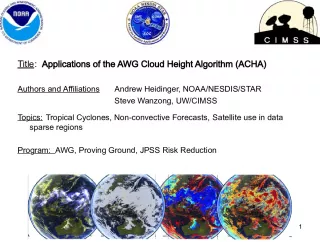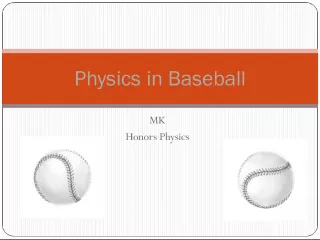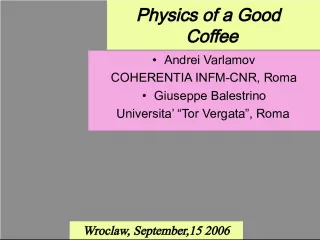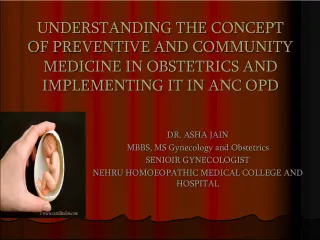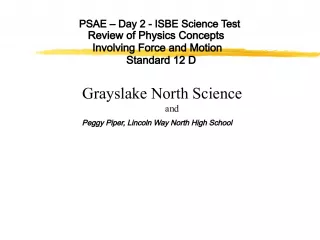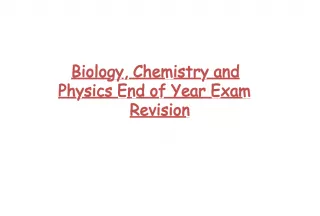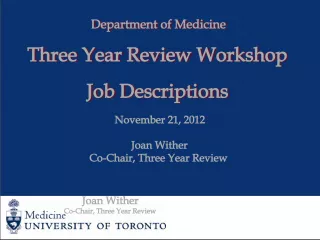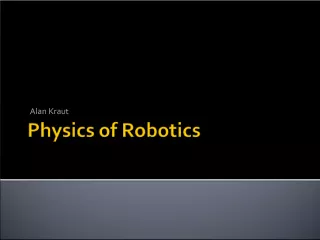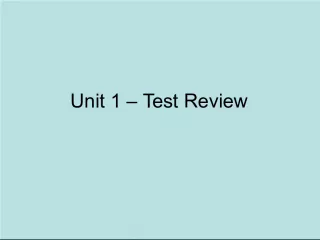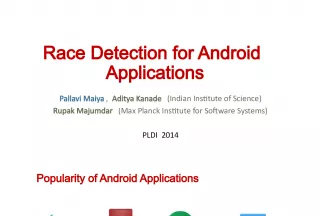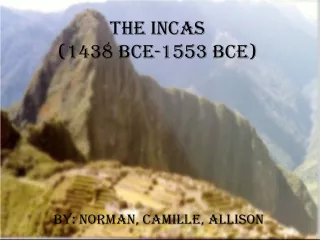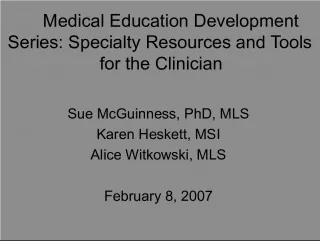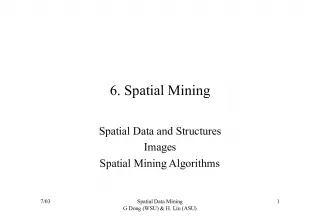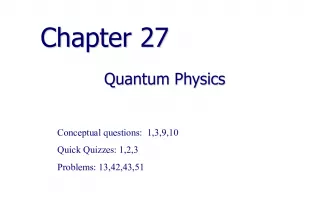Computational Physics Applications in Medicine, Pharmaceutics, and Nanotechnology


In this article, we discuss the various applications of computational physics in medicine, pharmaceutics, and nanotechnology. We explore the physical basis of molecular dynamics, the role of temperature and thermostats, numerical integration techniques such as the Verlet algorithm, and data analysis methods. We also discuss the abstract view of MD algorithms, system simulation, and full atomic and united atoms systems.
- Uploaded on | 1 Views
-
 leiaryan
leiaryan
About Computational Physics Applications in Medicine, Pharmaceutics, and Nanotechnology
PowerPoint presentation about 'Computational Physics Applications in Medicine, Pharmaceutics, and Nanotechnology'. This presentation describes the topic on In this article, we discuss the various applications of computational physics in medicine, pharmaceutics, and nanotechnology. We explore the physical basis of molecular dynamics, the role of temperature and thermostats, numerical integration techniques such as the Verlet algorithm, and data analysis methods. We also discuss the abstract view of MD algorithms, system simulation, and full atomic and united atoms systems.. The key topics included in this slideshow are Computational Physics, Molecular Dynamics, Verlet Algorithm, Numerical Integration, Temperature, Medicine, Pharmaceutics, Nanotechnology, Data Analysis, System Simulation,. Download this presentation absolutely free.
Presentation Transcript
2. Transfer FAS UAS SAINT-PETERSBURG STATE UNIVERSITY COMPUTATIONAL PHYSICS Introduction Physical basis Molecular dynamics Temperature and thermostat Numerical integration. Verlet algorithm Analyze data Abstract view of MD algorithms System simulation Full atomic system United atoms system Problems Idea Algorithm Conclusion
3. SAINT-PETERSBURG STATE UNIVERSITY COMPUTATIONAL PHYSICS Medicine Pharmaceutics Technology Nematics Visualization of micro structure
4. SAINT-PETERSBURG STATE UNIVERSITY COMPUTATIONAL PHYSICS Molecular dynamics is a standard computational technique used in condensed matter physics, material science, chemistry, and other fields, consisting of following the temporal evolution of a system of N particles, interacting with each other by a certain law. F = ma Newtons law (1) Rewrite (1) in a more detail form: Newtons law (2) i number of atom, m i atom mass, r i radius-vector of atom, F i resultant force
5. SAINT-PETERSBURG STATE UNIVERSITY COMPUTATIONAL PHYSICS Resultant force is a sum of two components: (3) U potential energy of the system, - force determined by interactions with molecules of surroundings. Interaction between not connected with each other atoms can be described with the use of Lennard-Jones potential: (4) , A, B - constants
6. SAINT-PETERSBURG STATE UNIVERSITY COMPUTATIONAL PHYSICS Thermostat algorithm which takes into account energy exchange effects and keeps necessary temperature. Collision thermostat Berendsen thermostat Reciprocating friction The deviation of temperature. Landau-Teller equation. The kinetic energy change
7. SAINT-PETERSBURG STATE UNIVERSITY COMPUTATIONAL PHYSICS 1 2 3 New coordinates of atoms Forces Velocities of atoms Integration step = 1 1.5 fs
8. SAINT-PETERSBURG STATE UNIVERSITY COMPUTATIONAL PHYSICS Visualization Correlation functions (statistical mechanics) reaction probabilities (chemistry)
9. SAINT-PETERSBURG STATE UNIVERSITY COMPUTATIONAL PHYSICS Initialize Positions/Velocities temperature/collision conditions/structure Calculate and Sum Forces for Each Atom Apply Thermostat/Volume Change Move Atoms Ahead One Step ( sec) (Verlet Algorithm) Analyze Data
10. SAINT-PETERSBURG STATE UNIVERSITY COMPUTATIONAL PHYSICS Theoretical problem definition ! Hypothesis Mathematical problem definition ! System of equations Numerical problem definition ! Numerical method
11. SAINT-PETERSBURG STATE UNIVERSITY COMPUTATIONAL PHYSICS Consider the transfer using two types of molecules: Heptane and Benzene. Heptane ( ) Benzene ( ) To minimize the time of calculation keeping a realistic aspect of modeling
12. SAINT-PETERSBURG STATE UNIVERSITY COMPUTATIONAL PHYSICS " + " calculation time is less " " system is more abstract
13. SAINT-PETERSBURG STATE UNIVERSITY COMPUTATIONAL PHYSICS Straight removing/appearance of all hydrogens will lead the system to have a big jump of energy and temperature so it will be needed much time to relax the system The appeared hydrogens must have there one velocities, but the range of them is unknown the values must be optimal in respect to relaxation time It is incomprehensible how to change interaction potentials between atoms
14. SAINT-PETERSBURG STATE UNIVERSITY COMPUTATIONAL PHYSICS Gradual appearance/disappearance of atoms of hydrogens No big jump of energy and temperature, a smooth transition dependent on a step Velocities of appeared hydrogens may be equal to velocities of carbons because the distance between them is very small Values of interaction potentials will go up/ go down according to an increase/decrease of bonds between atoms
15. SAINT-PETERSBURG STATE UNIVERSITY COMPUTATIONAL PHYSICS Modeling Full atomic system To shorten the bond on part Full atomic system with other characteristics Modeling United atoms system Full atomic system with other characteristics Bonds moving-out on part N times N times
16. SAINT-PETERSBURG STATE UNIVERSITY COMPUTATIONAL PHYSICS
17. SAINT-PETERSBURG STATE UNIVERSITY COMPUTATIONAL PHYSICS
18. SAINT-PETERSBURG STATE UNIVERSITY COMPUTATIONAL PHYSICS
19. SAINT-PETERSBURG STATE UNIVERSITY COMPUTATIONAL PHYSICS
20. SAINT-PETERSBURG STATE UNIVERSITY COMPUTATIONAL PHYSICS
21. SAINT-PETERSBURG STATE UNIVERSITY COMPUTATIONAL PHYSICS
22. SAINT-PETERSBURG STATE UNIVERSITY COMPUTATIONAL PHYSICS
23. SAINT-PETERSBURG STATE UNIVERSITY COMPUTATIONAL PHYSICS
24. SAINT-PETERSBURG STATE UNIVERSITY COMPUTATIONAL PHYSICS
25. SAINT-PETERSBURG STATE UNIVERSITY COMPUTATIONAL PHYSICS
26. SAINT-PETERSBURG STATE UNIVERSITY COMPUTATIONAL PHYSICS
27. SAINT-PETERSBURG STATE UNIVERSITY COMPUTATIONAL PHYSICS
28. SAINT-PETERSBURG STATE UNIVERSITY COMPUTATIONAL PHYSICS
29. SAINT-PETERSBURG STATE UNIVERSITY COMPUTATIONAL PHYSICS Theoretical problem definition ! Hypothesis Mathematical problem definition ! System of equations Numerical problem definition ! Numerical method
30. SAINT-PETERSBURG STATE UNIVERSITY COMPUTATIONAL PHYSICS
31. SAINT-PETERSBURG STATE UNIVERSITY COMPUTATIONAL PHYSICS
32. SAINT-PETERSBURG STATE UNIVERSITY COMPUTATIONAL PHYSICS
33. SAINT-PETERSBURG STATE UNIVERSITY COMPUTATIONAL PHYSICS
34. SAINT-PETERSBURG STATE UNIVERSITY COMPUTATIONAL PHYSICS
35. SAINT-PETERSBURG STATE UNIVERSITY COMPUTATIONAL PHYSICS C C C C C C C H H H H H H H H H H H H H H H H C C C C C C H H H H H H
36. SAINT-PETERSBURG STATE UNIVERSITY COMPUTATIONAL PHYSICS C' C' C' C' C' C' C' C' C' C' C' C' C'
37. SAINT-PETERSBURG STATE UNIVERSITY COMPUTATIONAL PHYSICS
